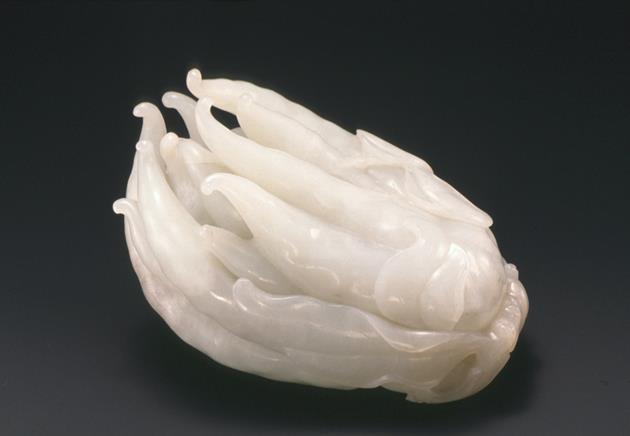Covered dish in the form of a Buddha's hand citron
18th-19th century
This oddly-shaped fruit derives its unusual name from its resemblance to the idealized, lotus-shaped fingers of the Buddha. In addition, the name is a pun on the Chinese words for blessing (fu) and longevity (shou), and thus this fragrant but inedible fruit became a popular symbol for a long and happy life.
Nephrite
3 3/4 x 5 1/2 x 3 1/4 in. (9.53 x 13.97 x 8.26 cm)
Eugene Fuller Memorial Collection
33.1057
Provenance: [T.Z. Shiota, San Francisco, California, April 1930]; purchased by Richard Fuller, 1933; Seattle Art Museum, Seattle, Washington, 1933

